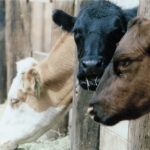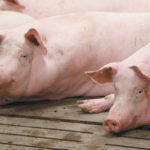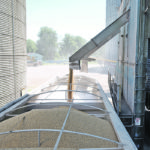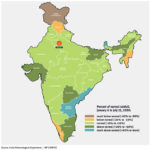Markets — page 325

Canadian beef exported to U.S. recalled

Palm and crude’s oilseed support might have plateaued

Grain stocks low as demand increases
Carryout expected to be 4.5 to seven million tonnes at the end of the crop year, down from last year’s 9.37 million tonnes
Western Canada’s grain sector is heading into the new crop year with lower-than-usual old crop supplies and strong new crop demand, according to industry officials. Mark Hemmes, president of Quorum Corp., is forecasting somewhere between 4.5 and seven million tonnes of grain, oilseed, pulse and special crops carryout in Western Canada when the current crop […] Read more
U.S.-based hog prices part of problem: report
Hog producers say the mechanism used to determine prices in Western Canada ignores regional supply and demand
Western Canadian hog pricing is so broken it not only doesn’t reflect supply and demand for pigs but is actually sending the opposite signals that that laws of supply and demand should dictate. It’s such a critical, multi-cause failure that if it is not corrected soon, malfunctioning prairie hog prices could cause the whole industry […] Read moreProducers deserve better from their federal government
Honey prices continue to defy domestic market signals
Industry says the flow of fake honey into this country has reduced prices paid to producers and distorted honey market
From 2016-19, honey prices in Western Canada ranged from $1.25 to $1.65 per pound. That’s significantly lower than 2014 and other periods in the early 2010s, when Canadian beekeepers received more than $2 per lb. for their honey. The weak prices have been a challenge for prairie beekeepers because the cost of production (buying queens, […] Read moreFinancial statements help take a good look at farm profit

Soy price unfazed by ending stocks
Unimpressive China sales, big Brazilian prospects blamed for lower futures despite lower-than-expected ending stocks
The soybean market continues to wait for sustained heavy buying out of China, says an analyst. Some in the trade feel the U.S. Department of Agriculture’s 2.05 billion bushel export forecast for 2020-21 could be low if China lives up to its Phase 1 agreement commitments. But so far there is no indication that Chinese […] Read more
Monsoon bodes well for Indian pulse crop
Farmers have gotten off to an early start seeding the summer crop, and higher-than-normal rainfall is welcome news
Farmers in India are planting the 2020-21 kharif (summer) pulse crop at a torrid pace. They had sown 20.17 million acres as of July 17 compared to 15.24 million acres a year ago and 18.27 million acres two years ago. “Kharif seeding is way ahead of the normal pace,” G. Chandrashekhar, a commodities market specialist […] Read more





